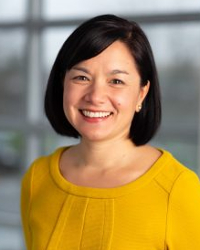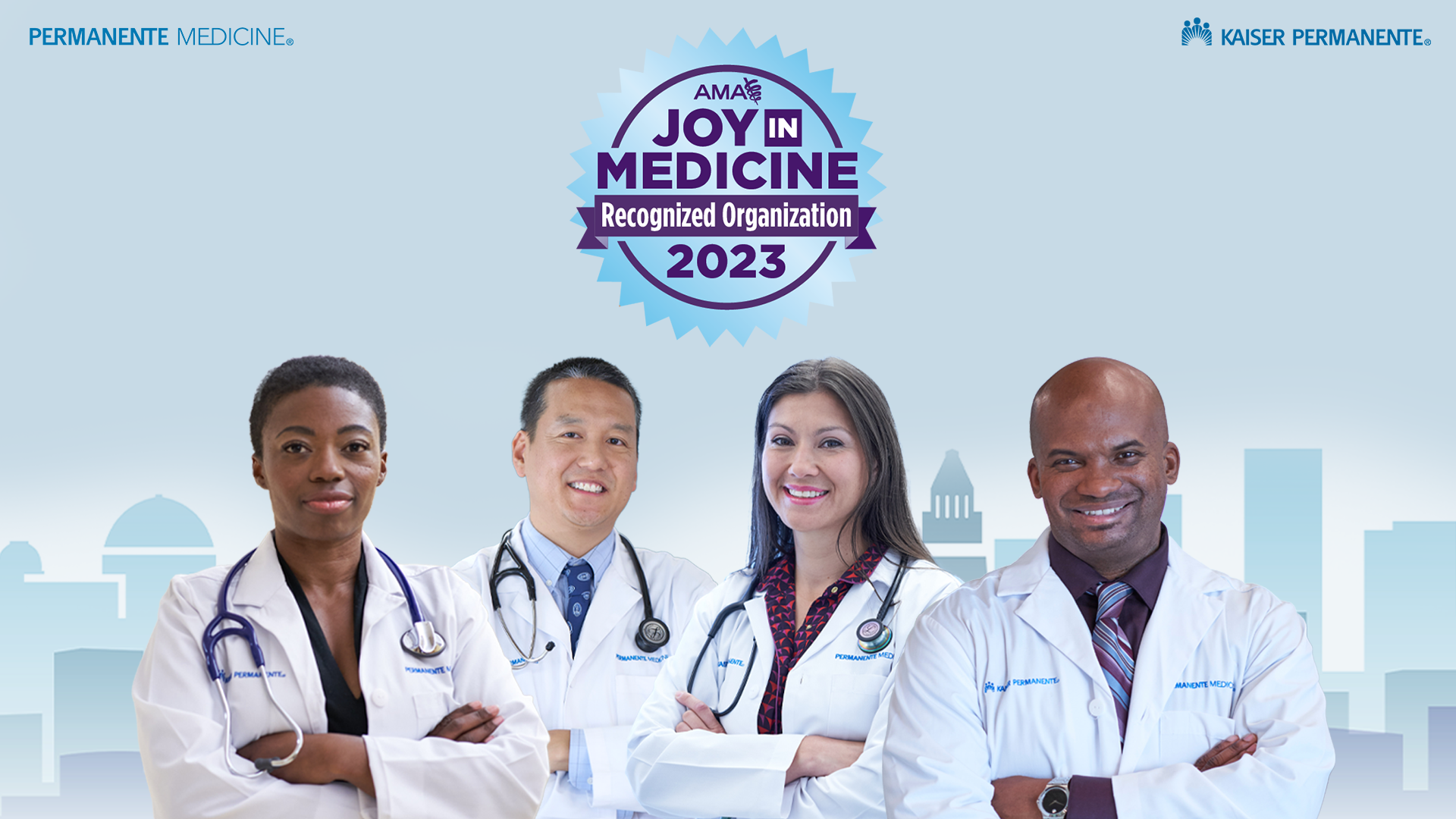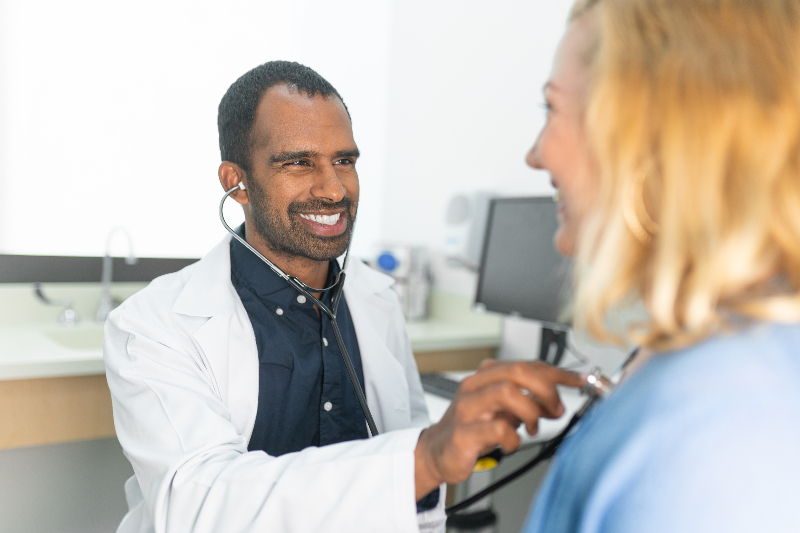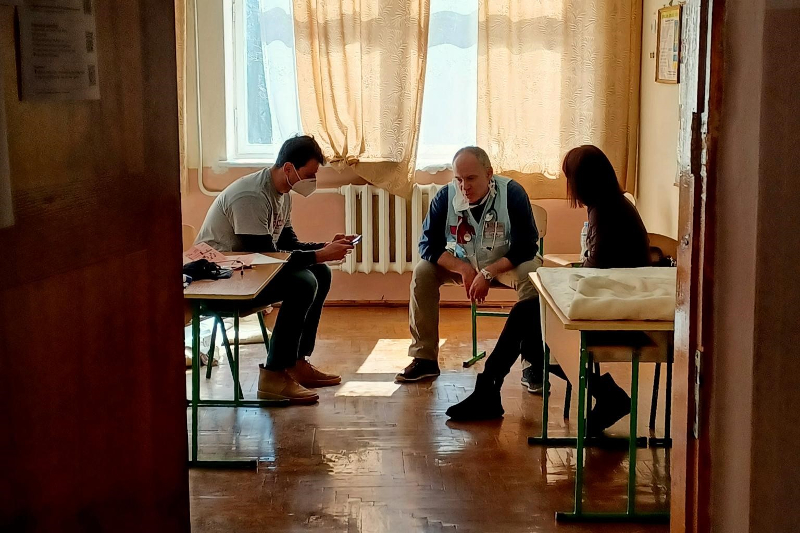The AMA recognized 4 Permanente Medical Groups for continuing efforts to support physician wellness with 2023 Joy in Medicine™ recognitions.

Making clinician wellness part of the system
To combat clinician burnout, apply a wellness lens to every decision
By Mary Wierusz, MD

Over the last few years, efforts to address clinician well-being took a back seat to prioritizing the public health needs during a pandemic. At the same time, the pandemic underscored the importance of the health care workforce and gave new visibility to the issue. With the industry facing unprecedented levels of burnout, health organizations need to make physician and clinician wellness a part of every decision.
If sustaining focus on clinician wellness was a challenge in the past, imagine launching a new approach to clinician well-being during a pandemic. That was the case with Washington Permanente Medical Group (WPMG), one of 8 medical groups that provide care to Kaiser Permanente members. In May 2020 I stepped into my role as medical director of Clinician Wellness, a reimagined leadership position at the medical group.
Instead of being a part of the Human Resources (HR) Department, I report directly to our medical group’s CEO. This change to the wellness leadership position provides unparalleled access to decision-makers who can help address systemic issues of clinician wellness at WPMG.
What I and others on this journey learned along the way can help organizations create the foundation for a successful culture change needed to help clinicians, which translates to positive outcomes for patients and our organization.
Here are 3 key steps to an organization’s cultural transformation to support clinician wellness:
Step 1: Foundational changes at all levels
The creation of a C-suite-level position is a key first step in transforming how an organization addresses clinician well-being. A senior executive dedicated to well-being demonstrates commitment and embeds wellness and well-being throughout the entire organization.
Enabling people to do the work they are trained to do to the best of their ability needs to be a centerpiece of the organization. To be the best place to get care, we need to be the best place to give care. Therefore, every leadership decision — whether operational, strategic, or financial — should be framed with the following question: How will this affect our people?
Recognizing, honoring, and ensuring that a wellness lens is applied at every level of the organization creates an environment for success.
Involving leaders from across the organization aligns workstreams and raises the visibility of how each decision impacts people. WPMG created a Cultural Transformation Oversight Group, which includes senior leaders of operations, HR, equity, inclusion, and diversity, communications, strategy, our chief financial officer, and the lead of Practice Leadership and Development. We also convened a Culture Advisory Group made up of more than 40 clinicians and employees from across the organization representing different specialties and career stages. This advisory group serves as a sounding board for wellness ideas and organizational changes, providing feedback from people who are often the most affected by systemic decisions.
Including people from every facet of our organization, especially those caring for patients day in and day out, improves bidirectional communication around the issues that matter most.
Related story: “Podcast: A foundation for physician wellness”
Step 2: The importance of bidirectional communication
Communication, communication, and more communication seems like the obvious ingredient of any successful initiative.
Bidirectional communication is an inclusive method of messaging that values the voices of everyone in the organization, from executives to the clinicians working directly with patients. It creates a back-and-forth between stakeholders that breaks down department silos and includes senior operational leaders and the board of directors. We’re continually working on how to improve bidirectional communication, which allows us to unearth risks to the organization and the systemic changes needed to ensure our people have the tools, resources, and sustainability of practice they need to provide the best care to patients each day.
In order to be the best place to get care, we need to be the best place to give care.
From town halls to open mic listening sessions to an anonymous feedback site, we invite our clinicians to share their thoughts about the challenges within the organization — from pebbles to boulders. There is still much work to be done here, as psychological safety is a key part of people feeling safe to speak up. We’re continually striving to create that safe space, break down the barriers and biases, and find ways to hold us all accountable.
Step 3: Reimagining clinician wellness
As we broaden the understanding of clinician well-being among leaders and stakeholders — reframing the issue as a systemic one — we also want to ensure there’s the capacity throughout the organization to implement initiatives and programs and cultivate a culture that supports this work. WPMG is launching new physician wellness champions — what we call “wellness champions 2.0” — in 2023. These change agents will help expand our wellness programs to reach more individuals and groups with team-building activities, practice improvement projects, coaching, and peer-support.
Another key step in cultural transformation is creating opportunities for people to connect. Along with the Cultural Transformation Group and Cultural Advisory Group, we established Community Wellness funds in 2022. These provide regular funds for each team and service line to use for community building activities. We encourage teams to be innovative and creative in how these funds might best serve their group. Examples include researched-backed commensality groups, team hikes in our beautiful state parks, and interventions to improve patient flow and scheduling. This is another way to engage our front-line clinicians and make sure they’re feeling valued and that their voices are being heard.
Cultural change is not a destination, it’s a journey. At WPMG, we’re just at the beginning of our journey of transformation. By embedding a wellness lens throughout the system, practicing bidirectional communication, and creating opportunities for people to connect at all levels, I’m hopeful for how we might grow into the culture we aspire to be in 5, 10, 15 years from now. It’s an environment that recognizes and values the well-being of the people within our organization, which in turn benefits the health and wellness of the patients we serve.
Mary Wierusz, MD, is a family medicine physician and serves as medical director of Clinician Wellness at the Washington Permanente Medical Group. She shared WPMG’s clinician wellness efforts at a recent American Medical Association group practice presentation.
Related story: “AMA interviews Northwest Permanente chief people officer on physician wellness”


